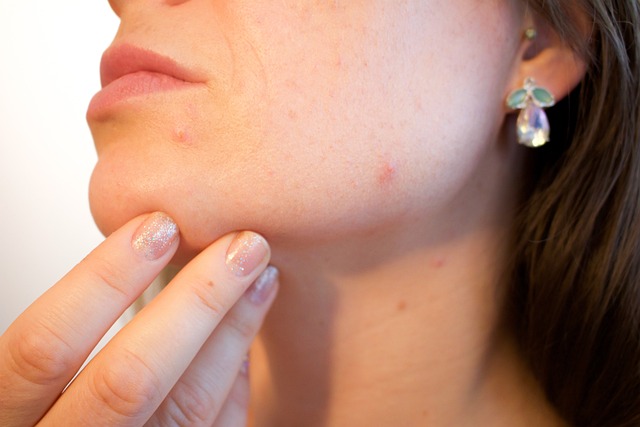Achieving healthy, radiant skin doesn’t have to be complicated. With a simple, consistent skincare routine, you can nourish your skin, protect it from environmental stressors, and maintain a youthful glow. Whether you’re just beginning your skincare journey or looking to enhance your regimen, following a basic routine can make all the difference. Here’s a detailed guide to the essential steps you need for a glowing complexion.
Why a Daily Skincare Routine Matters
A consistent skincare routine is essential for both maintaining skin health and addressing specific concerns like acne, dryness, or aging. Just as with any healthy habit, daily skincare routines yield the best results over time. By cleansing, moisturizing, protecting, and nourishing your skin, you’re giving it the tools it needs to stay resilient, hydrated, and youthful-looking.
The 5 Essential Steps in a Skincare Routine
To build a solid foundation, start with these five essential steps: cleansing, toning, moisturizing, protecting, and treating. Here’s how to incorporate each step effectively:
1. Cleanse: Start with a Fresh Slate
Cleansing is the first and most essential step in any skincare routine. It removes dirt, oil, and makeup, allowing the following products to penetrate your skin more effectively. Cleansing twice a day—morning and night—is ideal to keep your skin fresh and prevent clogged pores.
How to Choose a Cleanser:
- For dry or sensitive skin, opt for a gentle, hydrating cleanser.
- For oily or acne-prone skin, choose a foaming or gel cleanser that helps control excess oil.
- For normal or combination skin, a mild cleanser with balanced ingredients can work well.
Tip: Use lukewarm water to avoid stripping your skin of its natural oils. Massage the cleanser gently for about 60 seconds before rinsing thoroughly.
2. Tone: Balance and Prep Your Skin
Toners help balance the skin’s pH, remove any leftover impurities, and prepare your skin to absorb other products more effectively. Modern toners are often packed with antioxidants and hydrating ingredients, making them a valuable addition to your routine.
How to Choose a Toner:
- For hydration, choose a toner with ingredients like hyaluronic acid or rose water.
- For acne-prone skin, look for toners with salicylic acid to gently exfoliate and unclog pores.
- For anti-aging benefits, seek toners with antioxidants like vitamin C or green tea extract.
Tip: Apply toner using a cotton pad or gently pat it onto your skin with your hands, allowing it to fully absorb before moving to the next step.
3. Moisturize: Lock in Hydration
Moisturizing keeps your skin hydrated, soft, and resilient. It also creates a protective barrier, helping to prevent moisture loss throughout the day. A good moisturizer is vital for all skin types, even if you have oily skin.
How to Choose a Moisturizer:
- For dry skin, opt for a rich, cream-based moisturizer.
- For oily or acne-prone skin, look for a lightweight, non-comedogenic gel moisturizer.
- For combination skin, a balanced moisturizer with a non-greasy formula works well.
Tip: Apply moisturizer while your skin is slightly damp to lock in moisture. Remember to use a different, richer moisturizer at night to help repair and rejuvenate your skin as you sleep.
4. Protect: Don’t Skip Sunscreen
Sunscreen is perhaps the most critical part of any skincare routine to protect against premature aging, dark spots, and skin cancer. Daily sunscreen application shields your skin from harmful UVA and UVB rays, which can lead to collagen breakdown, sunburn, and other skin damage.
How to Choose a Sunscreen:
- Look for broad-spectrum protection with at least SPF 30.
- For sensitive skin, try a mineral sunscreen with zinc oxide or titanium dioxide.
- For oily or acne-prone skin, a lightweight, oil-free formula will prevent clogged pores.
Tip: Apply sunscreen generously 15 minutes before sun exposure. Reapply every two hours, especially if you’re outdoors. Sunscreen should be the final step in your morning skincare routine.
5. Treat: Address Specific Skin Concerns
This step allows you to target specific skin concerns like acne, fine lines, dark spots, or dullness. Treatment products may include serums, eye creams, and spot treatments.
Popular Treatment Ingredients:
- Vitamin C: Known for its brightening and anti-aging properties, vitamin C can help even out skin tone and reduce hyperpigmentation.
- Retinoids: Ideal for reducing wrinkles and improving skin texture, retinoids stimulate cell turnover and collagen production.
- Hyaluronic Acid: Perfect for dry skin, hyaluronic acid deeply hydrates and plumps the skin.
- Niacinamide: Helps reduce redness, improve elasticity, and regulate oil production, making it suitable for most skin types.
Tip: Apply serums and treatments after toner and before moisturizer to allow the active ingredients to penetrate deeply. Always patch-test new products to avoid potential irritation.
Additional Tips for a Complete Skincare Routine
- Exfoliate Weekly: Exfoliation helps remove dead skin cells, unclog pores, and enhance skin’s radiance. For a gentle option, consider exfoliating once or twice a week with products containing AHAs (alpha hydroxy acids) or BHAs (beta hydroxy acids).
- Use an Eye Cream: The skin around the eyes is thinner and more prone to fine lines. An eye cream with peptides, caffeine, or hyaluronic acid can help reduce puffiness and dark circles.
- Hydrate and Maintain a Healthy Diet: Hydration and a balanced diet are as important as topical treatments. Drinking enough water and eating nutrient-rich foods can significantly impact skin health from the inside out.
- Get Quality Sleep: Nighttime is when the skin repairs itself. Aim for 7-8 hours of sleep to support skin rejuvenation and maintain a healthy glow.
- Stay Consistent: Skincare routines take time to show results. Be consistent and patient with your daily routine for the best outcomes.
Conclusion: Building Your Perfect Skincare Routine
Establishing a simple yet effective skincare routine can make a world of difference in achieving radiant, healthy skin. By focusing on these five essential steps—cleansing, toning, moisturizing, protecting, and treating—you’ll create a foundation for long-term skin health. Remember to tailor your routine to your skin type and specific needs, and adjust your products seasonally or as your skin changes.
A consistent skincare routine isn’t just about appearance; it’s about caring for and protecting your skin, helping it thrive for years to come. So, whether you’re new to skincare or refining your routine, these steps provide a roadmap to achieving and maintaining your best skin.


Pingback: The Ultimate Winter Skincare Guide: Tips, Routines, and Products for Glowing Skin - Wellness Readers Digest
Pingback: The Benefits of Calendula for Skin Care - Wellness Readers Digest
Pingback: The Power of Plant Extracts in Skincare: Nature’s Best Kept Secret - Wellness Readers Digest